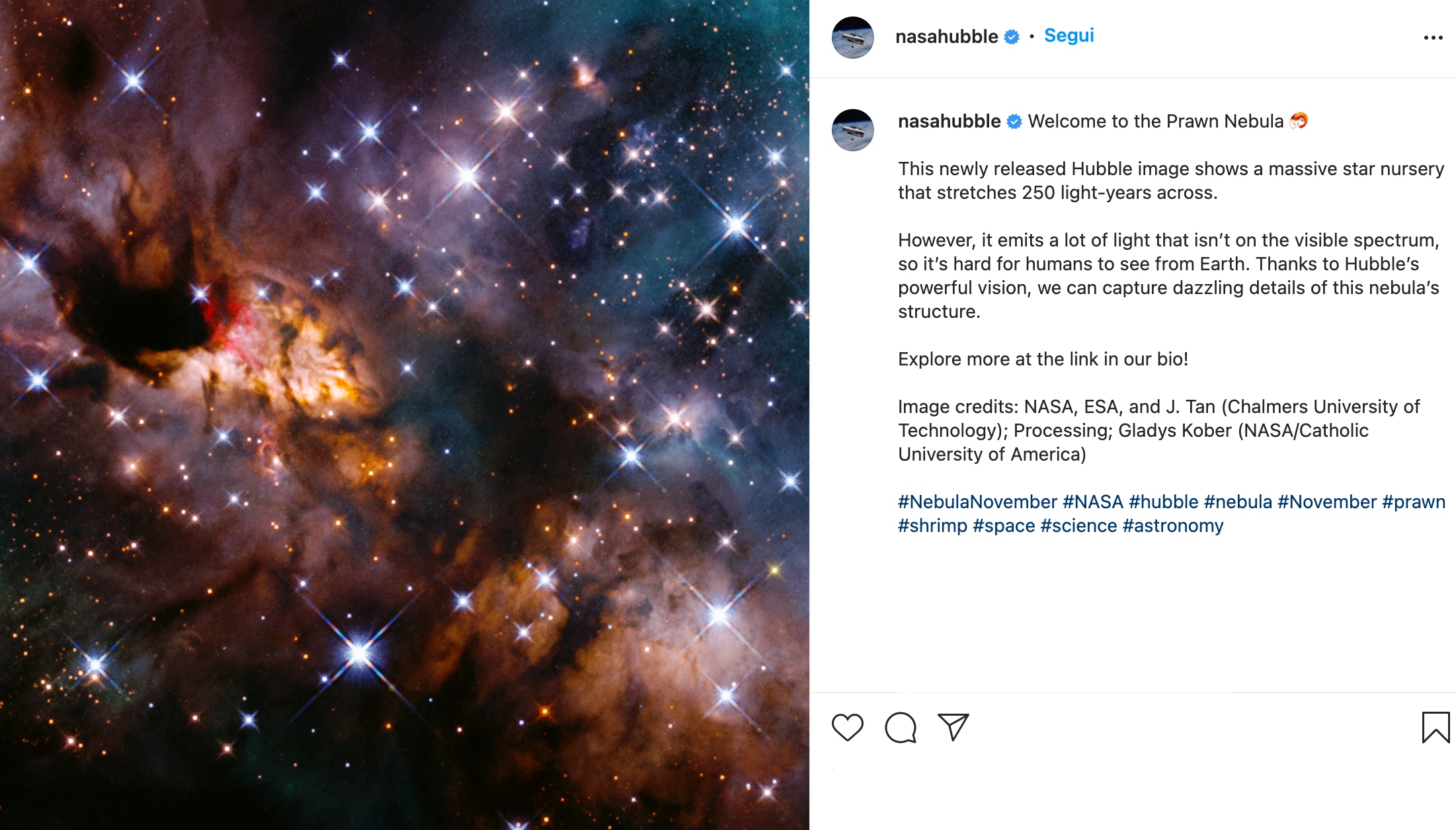Formally known as IC 4628, the nebula is located 6 thousand light-years from Earth. The Hubble Space Telescope has captured a stunning photo of the interstellar agglomerate floating in space.
A spectacular image of the Prawn nebula floating in space has been captured by the Hubble Telescope. The interstellar cluster, formally known as IC 4628, is located 6,000 light-years from Earth in the constellation Scorpio. Clouds of gas and dust are formed as a result of massive stellar explosions; in turn, this material gives rise to new stars. Extending over 250 light-years, IC 4628 is believed to be a massive stellar nursery, where new stars are forming.
What is the Prawn Nebula
The Prawn Nebula is observed in the southern part of the constellation Scorpio, just north of the brilliant open cluster NGC 6231, which is in the same galactic environment. Scientists classify it as an emission nebula because its gas has been energized, or ionized, by radiation from nearby stars. This process, as Nasa explains, produces electrons that re-emit the absorbed energy in the form of infrared light. However, the human eye cannot detect this type of glow, which is why IC 4628 is incredibly difficult to see from Earth.
The photo of the nebula taken by Hubble
Given the Hubble Telescope's vantage point in space and its array of cameras, the instrument was able to get a close-up view of the nebula's structure, including bright areas of glowing gas and the dazzling star formation. In the recent image, which captures a small portion of the nebula's vast star-forming region, red swirls of dust and gas indicate the presence of ionized iron (Fe II) emissions.
The incredible photo was taken using Hubble's Wide Field Camera 3, which is an instrument that is part of a larger project to detect massive, intermediate-sized stars that are still in the early stages of development, also known as protostars. “Gli astronomi – ha fatto sapere la Nasa – hanno utilizzato la sensibilità agli infrarossi della Wide Field Camera 3 di Hubble per cercare l’idrogeno ionizzato dalla luce ultravioletta dalle protostelle, i getti delle stelle e altre caratteristiche”.
Riguardo agli astri, recentemente è stato scoperto come si formano gli elementi nelle stelle. Un’altra ricerca ha individuato come le nane bianche riescano a rallentare il loro processo d‘invecchiamento, mentre il telescopio Kepler ha catturato il momento appena precedente all’esplosione di una supernova.
 Fonte foto: Nasahubble/Instagram
Fonte foto: Nasahubble/Instagram
Stefania Bernardini
